Melioidosis is a potentially life-threatening disease caused by the soil-dwelling bacterium, Burkholderia pseudomallei.
Melioidosis is a common cause of serious pneumonia and blood poisoning in the Northern Territory (NT), Australia. The bacteria live below the soil's surface during the dry season, but after heavy rainfall can move to surface water and mud. They can then become airborne.
Recent wet seasons have seen a dramatic increase in cases of melioidosis. As Darwin’s urban areas spread and irrigation schemes and agriculture encroach into the desert, there is an even greater risk of spread of melioidosis.
Our research focus:
- To reduce the number of deaths from melioidosis, through early diagnosis.
Our research impact:
- Helped to halve the death rate of melioidosis in the NT through a 31+-year prospective study—The Darwin Prospective Melioidosis Study (DPMS). With faster diagnosis and treatment, mortality rates fell from over 30% to around 10%.
- Documented and described the very diverse range of melioidosis symptoms through the analysis of over 1000 cases
- Defined the incubation period for melioidosis and the frequency of chronic disease and reactivation
- Developed the current treatment guidelines for melioidosis, which are now used globally
- Genetic profiling of Australian B. pseudomallei bacteria suggests that the bacterium evolved in Australia and then spread to Southeast Asia and further afield
- Discovered that introduced grasses in the NT harbour particularly high numbers of melioidosis bacteria. This discovery may well impact current agricultural development in Northern Australia where non-native grasses are widely planted
- Found that melioidosis bacteria may be carried and spread by birds
- Discovered that melioidosis bacteria are common in un-chlorinated bore water in the NT
- Described using genomics the first confirmed linkage of B. pseudomallei in storm air samples to an individual case of inhalational melioidosis
- Tested a number of new “point of care” diagnostics that are now being used in resource-poor settings overseas
- Used genomics to identify melioidosis transmission routes from environment to both humans and animals
- With veterinary colleagues described epidemiological and clinical aspects of melioidosis in animals, including in novel species
- Taken on responsibility for curating the MLST database of global B. pseudomallei from colleagues around the world.
Key staff:
- Prof Bart Currie
- Mark Mayo
- Dr Mirjam Kaestli
- Linda Ward
- Kelly McCrory
- Celeste Woerle
- Vanessa Rigas
- Darwin Prospective Melioidosis Study (D.P.M.S)
- The melioidosis agent Burkholderia pseudomallei in the anthropogenic environment of northern
Australia - Closing the loop on melioidosis
- Linking genomics of Burkholderia pseudomallei to melioidosis: diversity of clinical manifestations, changing epidemiology and microevolution in chronic carriage
- Characterisation of Burkholderia pseudomallei using unique genomic components.
- Melioidosis in Malaysian Borneo
- Burkholderia pseudomallei in Australia: A perspective of distribution and source attribution
- The occurrence of the melioidosis agent, Burkholderia pseudomallei, in scats from captive and wild animals in the Darwin region.
- Majoni, S.W., Hughes, J.T., Heron, B., Currie, B.J. (2017) Trimethoprim+sulfamethoxazole reduces rates of melioidosis in high risk haemodialysis patients. Kidney International Reports. (accepted 12 Sept 2017). www.kireports.org/#/article/S2468-0249(17)30391-1/fulltext
- Wiersinga, W. J., Currie, B. J., & Peacock, S. J. (2012). Medical progress: Melioidosis. New England Journal of Medicine, 367(11), 1035-1044.
- Sarovich, D. S., Price, E. P., von Schulze, A. T., Cook, J. M., Mayo, M., Watson, L. M., et al. (2012). Characterization of ceftazidime resistance mechanisms in clinical isolates of burkholderia pseudomallei from Australia. PLoS ONE, 7(2).
- Parameswaran, U., Baird, R. W., Ward, L. M., & Currie, B. J. (2012). Melioidosis at royal darwin hospital in the big 2009-2010 wet season: Comparison with the preceding 20 years. Medical Journal of Australia, 196(5), 345-348.
- Meumann, E. M., Cheng, A. C., Ward, L., & Currie, B. J. (2012). Clinical features and epidemiology of melioidosis pneumonia: Results from a 21-year study and review of the literature. Clinical Infectious Diseases, 54(3), 362-369.
- Kaestli, M., Schmid, M., Mayo, M., Rothballer, M., Harrington, G., Richardson, L., et al. (2012). Out of the ground: Aerial and exotic habitats of the melioidosis bacterium Burkholderia pseudomallei in grasses in Australia. Environmental Microbiology, 14(8), 2058-2070.
- Kaestli, M., Richardson, L. J., Colman, R. E., Tuanyok, A., Price, E. P., Bowers, J. R., et al. (2012). Comparison of TaqMan PCR assays for detection of the melioidosis agent Burkholderia pseudomallei in clinical specimens. Journal of Clinical Microbiology, 50(6), 2059-2062.
- Mayo, M., Kaestli, M., Harrington, G., Cheng, A. C., Ward, L., Karp, D., et al. (2011). Burkholderia pseudomallei in unchlorinated domestic bore water, tropical northern Australia. Emerging Infectious Diseases, 17(7), 1283-1285.
- Mattar, S., Hampton, V., Kaestli, M., Mayo, M., Choy, J. L., Harrington, G., et al. (2011). Melioidosis in birds and burkholderia pseudomallei dispersal, Australia. Emerging Infectious Diseases, 17(7), 1310-1312.
- Currie, B. J., Ward, L., & Cheng, A. C. (2010). The epidemiology and clinical spectrum of melioidosis: 540 cases from the 20 year darwin prospective study. PLoS Neglected Tropical Diseases, 4(11).
- Currie, B. J., Haslem, A., Pearson, T., Hornstra, H., Leadem, B., Mayo, M., et al. (2009). Identification of melioidosis outbreak by multilocus variable number tandem repeat analysis. Emerging Infectious Diseases, 15(2), 169-174.
Click here to view more melioidosis publications in PubMed.
Manual
Videos
-
New York Times Post | Australians told not to go outside to avoid deadly bacteria
Northern Territory residents have been warned not to go outside or they could be killed by an airborne bacteria.
-

Sunday Territorian | Deadly bacteria cases surge
Cases of the fatal Nightcliff Gardener's Disease, or melioidosis, have blown past predictions so far this wet season.
-

Nine News | Melioidosis
-

NMRC Researchers Utilize a Unique Study Platform to Examine Multiple Diseases in Australia
Researchers from the United States Naval Medical Research Center (NMRC) works in collaboration with Professor Bart Currie from Menzies School of Health Research, one of the world's foremost authorities on melioidosis.
-
Q&A: What You Need to Know About Melioidosis
CDC investigators continue to search for the source of the bacteria that caused four infections—two of them lethal—in four different states. The Scientist spoke with melioidosis expert Bart Currie about the disease.
-

NT News | Melioidosis death rates drop to 6%
THE mortality rate for melioidosis, a soil dwelling disease, has dropped in the last 30 years, while the number of diagnosed cases has increased.
-

Nine News Darwin: Fewer Deaths From Melioidosis
-
ABC Online | Thirty-year Menzies melioidosis study finds cases are rising but mortality has tumbled
Lead author Bart Currie from the Menzies School of Health Research said the mortality rate for people diagnosed with melioidosis plummeted over the lifetime of the study.
-
Fewer deaths from melioidosis direct result of 30-year study
The number of deaths /mortality rate in Darwin from an infectious disease found mostly in the tropics, melioidosis, has decreased from 31 to six per cent in the last 30 years a new paper published in The Lancet Infectious Diseases Journal has found.
-
9 News Darwin | Melioidosis warning
The Top End is facing an increased threat to a deadly disease that claimed a life in the Territory last year. As Zarisha Bradley reports medical experts are warning of the rising risk after recent monsoonal weather.
-
ABC News | Melioidosis story
Featuring Menzies' melioidosis experts, Dr Audrey Rachlin and Prof Bart Currie.
-
Tackling the Top End's deadly dirt disease at the source
The research through the Menzies School of Health Research by the newly graduated Dr Audrey Rachlin focused on the environmental bacterium Burkholderia pseudomallei, which causes melioidosis.
-

Melioidosis research traces source to reduce spread
Dr Audrey Rachlin focused on the environmental bacterium Burkholderia pseudomallei, which causes melioidosis.
-

Tropical disease kills crocodiles in NT
A deadly tropical disease that affects humans was responsible for killing two crocodiles near Darwin, flipping previously held beliefs the predators were highly resistant to infection.
-
ABC Online | Deadly bacteria killed two crocodiles in northern Australia, despite species being highly resistant
Crocodiles may not be as highly resistant to infections as previously thought, as a newly released study shows a deadly bacterium was responsible for killing two saltwater crocs in the Top End.
-
Deadly bacteria killed two crocodiles in northern Australia
The research, from Menzies School of Health Research was published in the Microbial Genomics journal.
-
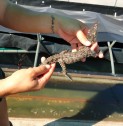
Media Release | Crocodile killing bacteria identified by Top End researchers
A ground-breaking study by a north Australian research team which identified a deadly bacterium responsible for killing saltwater crocodiles at a Top End Wildlife Park has recently been published in the journal, Microbial Genomics.
-

Killer disease strikes crocs
Melioidosis is killing Territory crocodiles, according to a paper written by researchers at the Menzies School of Health Research.
-
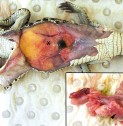
Media Alert | Crocodile killing bacteria identified by Top End researchers
A north Australian research team has identified a deadly bacterium responsible for killing saltwater crocodiles at a Top End Wildlife Park.
-
Source water key to bacterial water safety in remote Northern Australia
In the new work, Mirjam Kaestli of Charles Darwin University, Australia and colleagues including Menzies School of Health Research sampled water and biofilms from three remote Indigenous communities in Australia’s Northern Territory.
-
Media Release | Source water holds key to bacterial water safety in remote North
CDU Research Fellow Mirjam Kaestli and colleagues including Menzies School of Health Research sampled water and biofilms from three remote Indigenous communities in the Northern Territory.
-

Cases of deadly dirt disease melioidosis will increase, expert warns
Professor Bart Currie from the Menzies School of Health Research said he expected the melioidosis bacteria would increase in tropical regions.
-

NMRC Strives to Reduce Risk of Melioidosis Among Deployed Sailors and Marines
Dr. Kevin Schully, contractor and chief science officer with Naval Medical Research Center’s (NMRC) Austere environments Consortium for Enhanced Sepsis Outcomes Department (ACESO) recently retuned stateside after screening Sailors and Marines deployed to Darwin, Australia, who are at risk of developing melioidosis.
-
Territory sporting great, tough battle with melioidosis | NT News
Former Essendon great Michael Long credits Professor Bart Currie for his diagnosis and treatment for melioidosis.
-

Building genomics expertise in the NT
Menzies is investing and developing expertise in the emerging research area of genome sequencing. In the past year, we took the lead in a number of national and international collaborative programs investigating the genomics of tropical pathogens, and...
-

Melioidosis study improves patient outcomes
Melioidosis study improves patient outcomes Our research continued to put Menzies at the centre of better melioidosis patient outcomes through improved diagnosis and treatment. In August 2016, the Menzies melioidosis team contributed to 17 abstracts at...
-
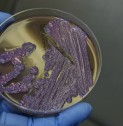
Melioidosis: More cases of potentially fatal bacteria from NT dirt emerge
More people are being infected by a potentially fatal bacterium in the Northern Territory, and health experts suspect building works could have something to do with the rise in cases.
-

Menzies helps track the travels of the deadly melioidosis bacteria
An international team of experts has confirmed the Australian origins of the bacterium (Burkholderia pseudomallei) which causes the potentially fatal infectious disease melioidosis and tracked its global dissemination.
-

Melioidosis: The Most Neglected Tropical Disease
Three sessions at the American Society for Microbiology 2017 Biothreats conference covered specific emerging diseases. Two of these, Zika and Ebola, have received a lot of media coverage (including on this blog), but the third disease, melioidosis, isn’t frequently found in newspaper headlines.
-
Jessica Webb 2016: Barbara Hale Fellowship Winner
Congratulations are extended to Jessica Webb for her 2016 Australian Federation of Graduate Women (AFGW) Barbara Hale Fellowship award.
-
Menzies melioidosis project recognised among Australia's best
A Menzies project has been recognised amongst the nation’s premier research projects by Australia’s peak body for health and medical research.
-

ABC Catalyst: Melioidosis feature
Life in northern Australia is full of spectacular surprises and natural hazards, some more obvious than others.
-

The melioidosis files
A potentially fatal bacterial disease, lurking in soil.

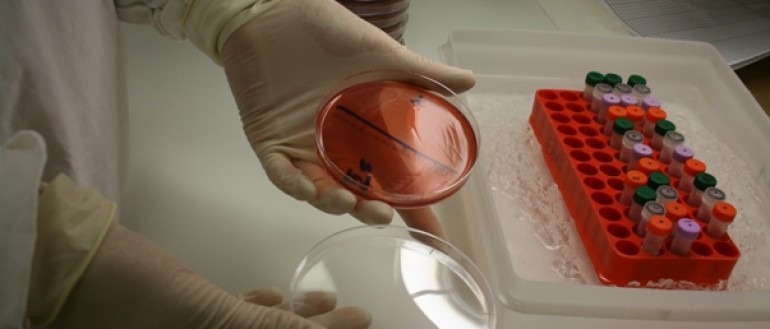


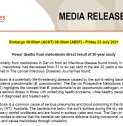

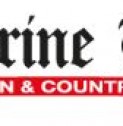





.JPG&w=123&h=126)